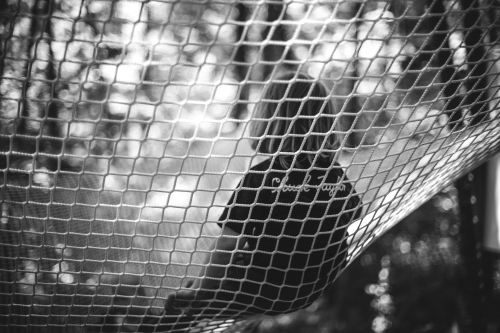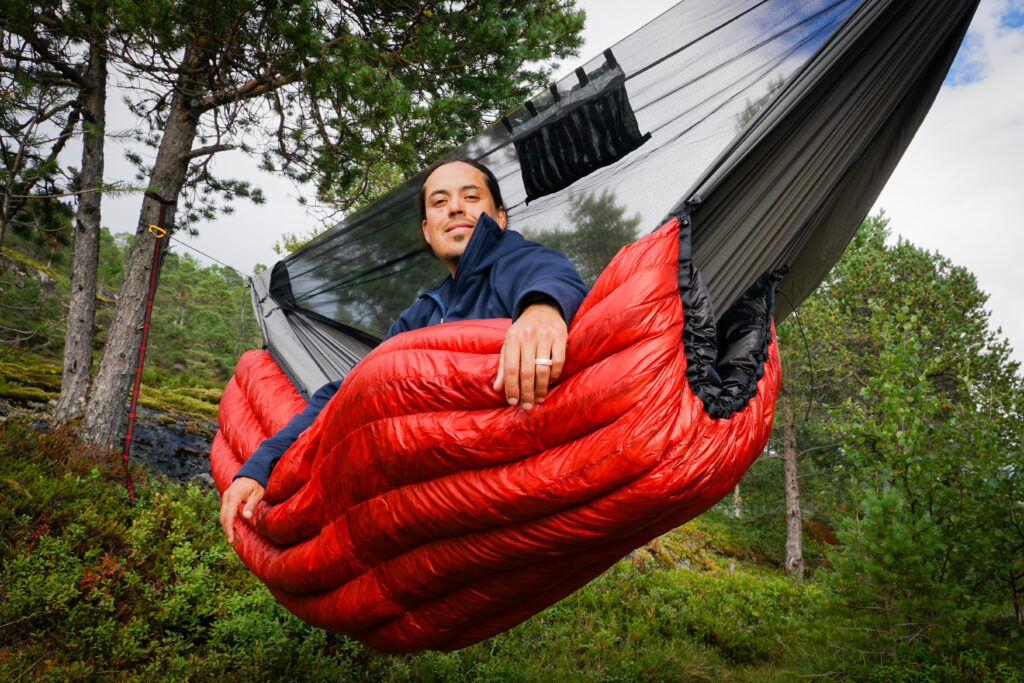How to Set Up Your Ultralight Hammock Bug Net in 5 Easy Steps

Imagine swaying gently in your hammock, serenaded by crickets. But wait! A swarm of mosquitoes is about to turn your tranquil escape into an itchy nightmare. Fear not, fellow adventurer! With an ultralight hammock bug net, you can have both comfort and protection. This guide unveils the secret to setting up your bug net in a flash, with only 5 simple steps. So pack your bags, grab your hammock, and get ready to experience the joy of bug-free slumber under the stars!
Hammock camping offers a liberating experience, allowing outdoor enthusiasts to sleep suspended above the ground amidst nature’s embrace. However, one persistent challenge that can turn this blissful adventure into a nightmare is the presence of bugs. Bug protection is crucial for a comfortable and undisturbed night’s rest in the wilderness.
A surprise backpacking trip with friends beckoned, but Lisa hesitated. The promised waterfall campsite sounded idyllic, except for one notorious detail: relentless mosquitos. Determined not to surrender comfort, she remembered her recently purchased ultralight hammock bug net. Lisa transformed her flimsy hammock into a fortress against the biting insects. Within minutes, she was swinging gently, the cool breeze and the sound of cascading water her only companions.
Imagine settling into your hammock, ready to drift off into a serene slumber, only to be rudely awakened by the relentless buzz of mosquitoes or the creepy crawlies exploring your sleeping quarters. Bug bites not only cause discomfort but can also pose health risks in certain environments. Protecting yourself from insects ensures uninterrupted sleep and a pleasant camping experience.
Enter
the ultralight hammock bug net, a game-changer for hammock campers seeking convenience and peace of mind. Unlike traditional tents, hammocks offer minimal protection from insects, making a reliable bug net essential gear. Ultralight bug nets are designed to provide maximum coverage while adding negligible weight to your backpack, making them a practical choice for backpackers and minimalist adventurers.
Aside from the obvious benefit of bug protection, these ultralight bug nets are engineered for breathability, ensuring adequate airflow on warm nights. Their compact size and easy setup make them a hassle-free addition to your camping arsenal. With a bug net in place, you can fully immerse yourself in nature without worrying about pesky intruders disrupting your rest.
Gathering Your Materials
Before embarking on your hammock camping trip, it’s essential to gather all the necessary materials for setting up your bug net. Here’s a rundown of what you’ll need:
List of Necessary Materials for Setting Up the Bug Net
- Ultralight Hammock Bug Net: The centerpiece of your bug protection setup, the bug net should be lightweight, durable, and specifically designed to fit your hammock model.
- Hammock Straps or Suspension System: These straps or suspension systems are what you’ll use to hang your hammock between two trees. Ensure they are strong and adjustable to accommodate various distances between anchor points.
- Carabiners or Other Attachment Hardware: Carabiners or similar hardware are essential for securing your bug net to your hammock straps or suspension system. Opt for lightweight, sturdy options that can bear the weight of your hammock and bug net.
Tips for Selecting the Right Bug Net for Your Hammock
When choosing a bug net for your hammock, consider the following factors:
- Compatibility: Ensure the bug net is compatible with your specific hammock model and size. Some bug nets are designed to fit certain brands or styles of hammocks, so double-check compatibility before making a purchase.
- Weight and Packability: Look for an ultralight bug net that won’t add significant bulk or weight to your backpack. Compact, packable bug nets are ideal for backpackers and minimalist campers.
- Ventilation: Opt for a bug net with breathable mesh to prevent condensation buildup and ensure adequate airflow on warm nights.
- Ease of Setup: Choose a bug net with a straightforward setup process, preferably compatible with your hammock’s suspension system for hassle-free installation.
- Durability: Select a bug net made from durable materials that can withstand outdoor conditions and repeated use without tearing or fraying.
Ensuring All Materials Are in Good Condition Before Starting the Setup Process
Before heading out on your camping trip, take the time to inspect all your gear and ensure everything is in good condition. Check for any signs of wear or damage on your bug net, hammock straps, and attachment hardware. Replace any worn-out components to avoid issues during setup or while camping. Additionally, familiarize yourself with the setup instructions for your bug net to streamline the process once you’re out in the field.
By gathering high-quality materials and performing thorough inspections beforehand, you can set yourself up for a successful and bug-free hammock camping experience.
Setting Up the Hammock
Setting up your hammock is the first step to creating a comfortable and inviting sleeping space in the great outdoors. Here’s a guide to help you hang your hammock securely and efficiently:
Choosing an Appropriate Location for Hanging Your Hammock
Selecting the right location is crucial for a successful hammock setup. Look for sturdy anchor points, such as trees or sturdy poles, that are spaced apart at a distance slightly longer than the length of your hammock. Avoid areas with dead or weak branches overhead and be mindful of any potential hazards, such as falling debris or uneven terrain. Additionally, consider factors like shade, wind protection, and proximity to water sources when choosing your hammock spot.
Attaching Hammock Straps to Anchor Points
Once you’ve found the perfect spot, it’s time to attach your hammock straps to the anchor points. Wrap the straps around the trees or poles at chest height, ensuring they are secure and evenly spaced. Avoid using rope directly on trees, as it can damage the bark and harm the tree’s health. Most hammock straps come with adjustable loops or daisy chains, making it easy to customize the length and tension of your setup.
Securing the Hammock to the Straps and Adjusting for Comfort and Stability
With the straps in place, it’s time to hang your hammock. Attach the carabiners or hooks on each end of your hammock to the loops or attachment points on the straps. Adjust the height and tension of the hammock to achieve a comfortable and stable position. Ideally, the hammock should be hung with a slight sag in the middle to prevent uncomfortable tipping or flipping. Test the stability of your setup by gently sitting or lying in the hammock, making adjustments as needed to achieve the perfect balance.
Once your hammock is securely hung, take a moment to admire your handiwork and soak in the natural beauty surrounding you. With your hammock set up and ready to go, you’re one step closer to enjoying a relaxing and rejuvenating outdoor adventure. Now all that’s left to do is kick back, relax, and let the gentle sway of the hammock lull you into blissful tranquility.
“Hammock camping is a popular outdoor activity, and bug nets are essential gear for many hammock campers.”
Installing the Bug Net
Protecting yourself from pesky insects is essential for a comfortable and uninterrupted night’s sleep during hammock camping. Installing a bug net adds an extra layer of defense against mosquitoes, flies, and other critters. Here’s how to set up your bug net for a bug-free outdoor experience:
Unpacking and Unfolding the Bug Net
Begin by unpacking your bug net and laying it out flat. Take a moment to inspect the net for any tears, holes, or defects that may compromise its effectiveness. Most bug nets are designed to fold or roll up compactly for easy storage and transport. Unfold the bug net and shake it out to remove any wrinkles or creases, ensuring it’s ready for installation.
Attaching the Bug Net to the Suspension System or Ridgeline
Next, it’s time to attach the bug net to your hammock’s suspension system or ridgeline. Many bug nets come with integrated suspension systems or attachment points designed to seamlessly connect to your hammock setup. Follow the manufacturer’s instructions to secure the bug net in place, ensuring a snug and secure fit. Use carabiners or hooks to attach the bug net to the suspension straps or ridgeline, making sure each connection point is secure.
Ensuring Proper Coverage and Alignment with the Hammock
Once the bug net is attached, take a moment to ensure proper coverage and alignment with your hammock. The bug net should fully enclose the hammock, creating a protective barrier against insects from all sides. Check that the bug net is taut and free from any gaps or openings where bugs could enter. Adjust the tension of the bug net as needed to achieve a snug and secure fit around your hammock.
Pay special attention to the bottom of the bug net, ensuring it is securely tucked under your sleeping pad or mattress to prevent insects from sneaking in from below. Take the time to align the bug net with your hammock, ensuring it doesn’t interfere with your comfort or mobility while inside the hammock. With the bug net properly installed, you can rest easy knowing you’ll be protected from unwanted insect intruders throughout the night.
By following these simple steps, you can effectively install your bug net and enjoy a peaceful night’s sleep without the annoyance of buzzing and biting bugs. With proper bug protection in place, you’re free to relax and unwind in your hammock, surrounded by the beauty of the great outdoors.
Final Adjustments and Testing
As you near the end of your bug net setup process, it’s essential to make final adjustments and conduct thorough testing to ensure maximum protection against insects. Here’s how to fine-tune your bug net setup and verify its effectiveness:
Adjusting Tension and Height of the Bug Net for Optimal Protection
With the bug net in place, take a moment to adjust the tension and height to achieve optimal protection. The bug net should be taut and securely attached to your hammock’s suspension system or ridgeline. Adjust the
height of the bug net to ensure it hangs just above your hammock, creating a barrier that prevents insects from reaching you while you sleep. Pay attention to any sagging or slack in the bug net and make necessary adjustments to achieve a snug and secure fit.
Checking for Any Gaps or Openings That Bugs Could Exploit
Carefully inspect the bug net for any gaps, openings, or tears that bugs could exploit to gain access to your sleeping space. Check the seams, zippers, and attachment points for any signs of damage or wear that may compromise the integrity of the bug net. Seal any gaps or openings with tape or patches to prevent insects from sneaking in during the night. Pay close attention to the bottom of the bug net, ensuring it is securely tucked under your sleeping pad or mattress to prevent bugs from crawling in from below.
Testing the Bug Net by Entering the Hammock and Observing for Any Issues
Once you’ve made final adjustments and checked for gaps or openings, it’s time to test the bug net by entering the hammock. Climb into your hammock and zip or secure the bug net closed, then spend a few moments observing your surroundings for any signs of insect activity. Move around inside the hammock to ensure the bug net stays in place and maintains its protective barrier. Pay attention to any areas where the bug net may rub or chafe against the hammock, as this could lead to wear over time. Make note of any issues or concerns and address them before settling in for the night.
By conducting final adjustments and thorough testing, you can ensure your bug net is properly installed and ready to provide reliable protection against insects during your hammock camping adventures. With a well-secured bug net in place, you can rest easy knowing you’ll enjoy a peaceful and bug-free night’s sleep in the great outdoors.
Set it Up
Proper bug protection is crucial for a comfortable and enjoyable camping experience. Insects not only cause discomfort with their buzzing and biting but can also pose health risks in certain environments. By investing in a reliable bug net and taking the time to set it up correctly, you can ensure uninterrupted sleep and peace of mind throughout your outdoor adventures.
Now that you’ve mastered your ultralight bug net setup in just 5 steps, a world of comfortable, pest-free naps awaits! Picture this: a gentle breeze whispers through the trees, fireflies dance in the twilight, and you’re nestled securely in your hammock, the night sky your ceiling. With this newfound skill, transform any outdoor adventure into a relaxing haven. So go forth, conquer those pesky bugs, and embrace the magic of hammock camping under the wide-open sky!
You may also be interested in: Circadian
Embark on your next adventure with Hammock Gear’s custom quilts! Tailor your comfort for the wild – choose your style, warmth, and size to craft your perfect eco-friendly outdoor companion, or grab a complete ultralight kit. Made in the USA for unparalleled quality and comfort. Trusted since 2009. Shop Now and tap into a community of nature lovers! ⭐
Related Posts
The Best Camping Hammocks of 2024 – A Buyer’s Guide by Hammock Gear
A good camping hammock can completely transform how you experience…
Can Napping Hurt You? Unveiling the Pros & Cons of Daily Zzz’s
Napping, the act of taking a brief sleep during the…


